Results showed that the IMTA system yielded the best production for both species
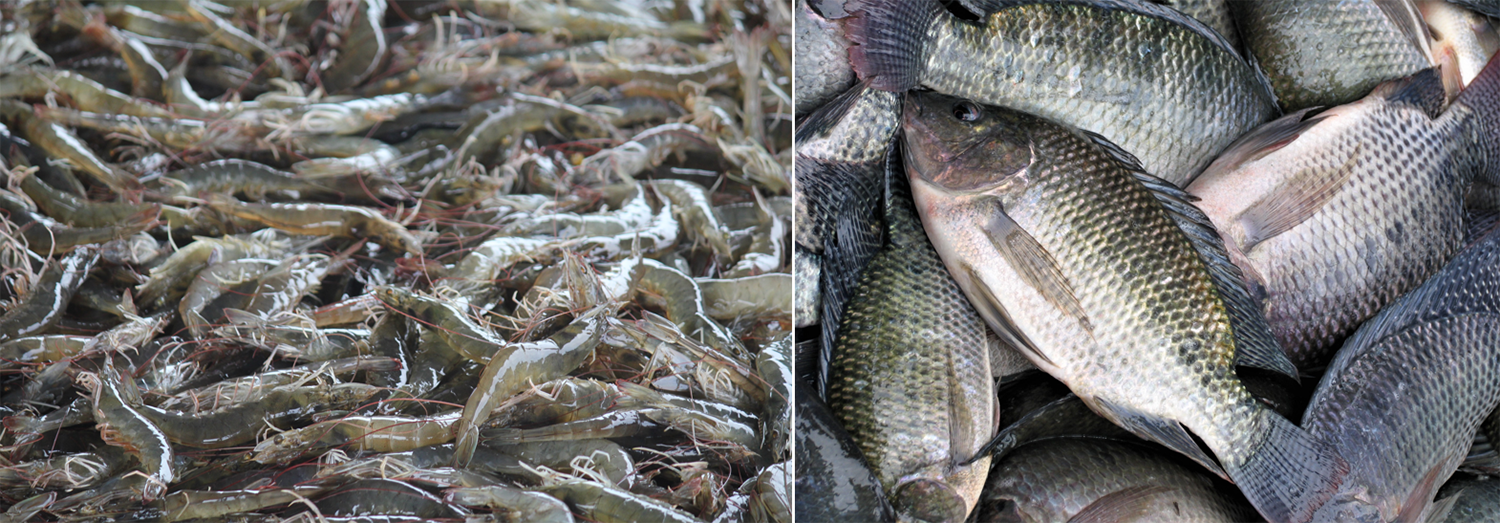
For farmed shrimp production, authors have recommended that the total suspended solids (TSS) concentrations should not exceed 350 mg per liter. Mechanical clarifiers can be used for the removal of particulate organic matter by gravitational action in a slow radial water flow. Clarifiers are relatively easy to operate but require extra space and depend directly on the type of biofloc, as the size and nature of the biofloc will directly influence the speed and efficiency of sedimentation, and clarifiers may not be as efficient in some specific cases. Furthermore, recent studies have shown that clarifiers can modify the structure of the microbial community present in bioflocs and may open doors for opportunistic microorganisms in the culture system.
Another way to remove excess TSS is by integrating other species of interest in aquaculture, which consumes these particles, reducing the TSS accumulation. This is Integrated Multitrophic Aquaculture (IMTA), and it has been gaining importance in recent decades due to the need to promote environmentally friendly technologies while maintaining productivity in aquaculture systems. In IMTA, residues ̶ such as unconsumed feed, feces, and metabolic excretion of one species ̶ feed other species in different trophic levels in the same culture environment. The coupling of biofloc and IMTA systems could be an effective way to deal with the accumulation of TSS generated by the rapid formation of biofloc and to diversify aquaculture production.
The Nile tilapia (Oreochromis niloticus) is a potential candidate to compose the multitrophic system with shrimp like the Pacific white shrimp (Litopenaeus vannamei). As an omnivorous species, tilapia can consume the bioflocs of the system. But there is no information regarding the best spatial arrangement to integrate tilapia into the system, which can combine the biological and economic advantages of this integration.
This article – adapted and summarized from the original publication (Holanda, M. et al. 2022. Production of Marine Shrimp Integrated with Tilapia at High Densities and in a Biofloc System: Choosing the Best Spatial Configuration. Fishes 2022, 7(5), 283) – reports on a study that compared the performance of L. vannamei shrimp and Nile tilapia at high density in polyculture (both species in the same tank) and multitrophic (species in different tanks) arrangements, and the effects on water quality, especially on organic matter (biofloc).
Study setup
The study was conducted at the Marine Aquaculture Station (EMA), Institute of Oceanography of the Federal University of Rio Grande (FURG), located in Cassino Beach, Rio Grande, RS, southern Brazil. The study lasted 30 days. Juvenile Nile tilapia (O. niloticus) were procured from a commercial fish farm. L. vannamei juveniles were obtained from a commercial hatchery, and all fish and shrimp acclimated in a biofloc system for 2 weeks before the trial.
The experiment consisted of three treatments in triplicate, randomly distributed: MONO–monoculture of shrimp; IMTA ST–integrated tilapia and shrimp in the same tank; IMTA DT–integrated culture tilapia and shrimp in different tanks. In all treatments, the shrimp density was 204 shrimp per cubic meter (45 shrimp per tank), and the fish density was 100 fish per cubic meter (18 fish per tank). At the beginning of the experiment, shrimp and fish had initial weights of 2.67 ± 0.17 grams and 7.44 ± 1.18 grams, respectively. Shrimps and fish were individually weighed before being placed in the experimental units.
A biofloc inoculum from an L. vannamei greenhouse culture system was used in the experimental units stocked with mature bioflocs, corresponding to 20 percent of the volume of the experimental tank (44 liters of inoculum + 176 liters of seawater). Molasses was used as a carbon source in the initial phases of cultivation for ammonia control. The inoculum’s initial concentration was TSS ± 350 mg/L and ±70 mg/L of nitrate, indicating that the nitrification process was taking place in this matrix tank.
For detailed information on the experimental design, recirculation system and animal husbandry; data collection and statistical analyses, refer to the original publication.
Results and discussion
Our results showed that animal survival, final average weight, weekly weight gain, final biomass and shrimp productivity were higher in MONO and IMTA DT treatments, with no significant difference between them, and lower in IMTA ST treatment. Shrimp FCR was lower in the MONO and IMTA DT treatments and did not present significant differences between these two treatments. The FCR was significantly higher in IMTA ST treatment
The opposite was observed for tilapia. Final average weight, weekly weight gain, final biomass, and productivity were higher in IMTA ST treatment and lower in IMTA DT, while FCR was lower in the IMTA ST and higher in the IMTA DT treatments.
For the system as a whole (shrimp and tilapia together), the total final biomass was alike in the IMTA DT and IMTA ST treatments, with significantly lower values in the MONO treatment. The system productivity was significantly higher in IMTA ST than in the MONO and IMTA DT treatments. The system FCR, on the other hand, was higher in the MONO than in the IMTA DT and IMTA ST treatments, which did not differ significantly between them.
Our results showed that integrating the culture of Nile tilapia with Pacific white shrimp, either in the same pond or in separate ponds, did not affect water quality parameters for either cultured species. Nitrogenous compounds did not show any significant variation during the experiment as a result of the use of inoculated biofloc. The observed values did not reach toxic levels for shrimp or tilapia. And despite the high nitrate values at the end of the experimental period, the pH values were above 7.9, without acidification of the medium, because of the successive pH and alkalinity corrections during the experiment. Despite the decrease in the mean value of TSS, the presence of tilapia did not affect the microbial community in the biofloc system since there was no significant difference in the mean value of nitrogen compounds with the presence of fish.
Total suspended solids (TSS) and turbidity values were kept at acceptable levels for both species. Despite the higher input of feed and consequently nitrogen in the treatments where tilapia was present, the average TSS values were significantly higher where tilapia was not present, even though the biomass produced with the shrimp + fish integration was higher in these treatments. That is, the higher nitrogen input was not reflected in bacterial biomass accumulation as expected in a shrimp monoculture biofloc system, evidencing the consumption of solids by tilapia, which demonstrates an ecological benefit.
Despite higher feed inputs in the IMTA DT and IMTA ST treatments when compared to the MONO treatment, orthophosphate levels were not affected by the presence of the fish. This shows that the presence of tilapia in integration with shrimp is a viable alternative for greater recycling of nutrients in the culture system.
The presence of tilapia in the integrated system with shrimp together in the same pond negatively affected shrimp performance, possibly due to the higher biomass (shrimp + fish) in the same pond. Shrimp growth is density dependent: the higher the stocking density, the lower the weight of the individual, so the density of shrimp combined with the density of fish in a small area (bottom area of 0.36 square meters), together with a total initial biomass 2.2 times higher than the shrimp that were grown in the Mono and IMTA DT treatments likely contributed to the decreased zootechnical performance of the shrimp in the tilapia in treatment.
Also, the tilapia may have consumed some the shrimp feed or even ingested some of the shrimp. This could explain the better performance of the tilapia when grown in the same pond as the shrimp. And the total suspended solids were a possibly significant source of energy for the tilapia, as the FCR was 0.6 in IMTA DT and 0.3 in IMTA ST treatments. Other authors have observed low feed conversion rates for tilapia (from 0.21 to 0.24) when fed with 1 percent of the biomass.
In the IMTA ST treatment, the FCR was much lower with double the growth and productivity of tilapia when compared to the IMTA DT. This result shows that if we increase the feeding rate of the tilapia when growing in separate tanks from the shrimp, tilapia will possibly still exert its ecological role in the integrated system as a consumer of bioflocs and show higher growth rates, as seen in the IMTA ST treatment. Even though undernourished, the tilapia fed on flakes had weekly growth rates expected for culture in biofloc systems. Similar results of biofloc consumption by tilapia when growing in integrated shrimp culture have been observed in other studies.
Various authors have reported IMTA systems as the only practical remediation approach with the prospect of generating revenue by diversifying production, with the goal to increase long-term sustainability and profitability per culture unit (and not by species, as practiced in monocultures) by recovering some of the nutrients and energy lost in monocultures, turning them into additional products with commercial value.
The integrated culture of Pacific white shrimp and Nile tilapia is a way to diversify production and improve the profitability of aquaculture. The final biomass of our IMTA DT and IMTA ST treatments doubled the final biomass of shrimp monoculture, justifying the use of IMTA and proving it to be an ecologically and economically viable alternative. It is worth noting that it was possible to increase the total biomass produced in the IMTA DT treatment by 175 percent without affecting the specific growth rate and feed conversion of the shrimp.
Perspectives
Our data shows that tilapia were efficient in consuming and maintaining TSS levels in the integrated system with shrimp, and did not negatively affect water quality. The zootechnical performance of L. vannamei shrimp was impaired when growing in the same tank as the tilapia. Therefore, based on our results, the best integrated super-intensive system for L. vannamei and O. niloticus in the tilapia-to-shrimp ratio of 0.49 is in separate tanks, as we observed in the IMTA DT treatment.
We recommend that, under the experimental conditions we tested, shrimp and fish be grown in separate tanks so that the producer can have two final products for marketing at the end of the production cycle without negatively affecting shrimp production.
Now that you've reached the end of the article ...
… please consider supporting GSA’s mission to advance responsible seafood practices through education, advocacy and third-party assurances. The Advocate aims to document the evolution of responsible seafood practices and share the expansive knowledge of our vast network of contributors.
By becoming a Global Seafood Alliance member, you’re ensuring that all of the pre-competitive work we do through member benefits, resources and events can continue. Individual membership costs just $50 a year.
Not a GSA member? Join us.
Authors
-
Mariana Holanda, Ph.D.
Marine Aquaculture Station, Institute of Oceanography, Federal University of Rio Grande–FURG, Rua do Hotel, n°2, Cassino, Rio Grande 96210030, Brazil
-
Wilson Wasielesky, Jr., Ph.D.
Marine Aquaculture Station, Institute of Oceanography, Federal University of Rio Grande–FURG, Rua do Hotel, n°2, Cassino, Rio Grande 96210030, Brazil
-
Gabriele Rodrigues de Lara, Ph.D.
Corresponding author
Escuela de Ciencias del Mar, Pontificia Universidad Católica de Valparaíso, Avenida Universidad 330, Valparaíso 2340000, Chile -
Luís H. Poersch, Ph.D.
Marine Aquaculture Station, Institute of Oceanography, Federal University of Rio Grande–FURG, Rua do Hotel, n°2, Cassino, Rio Grande 96210030, Brazil
Tagged With
Related Posts
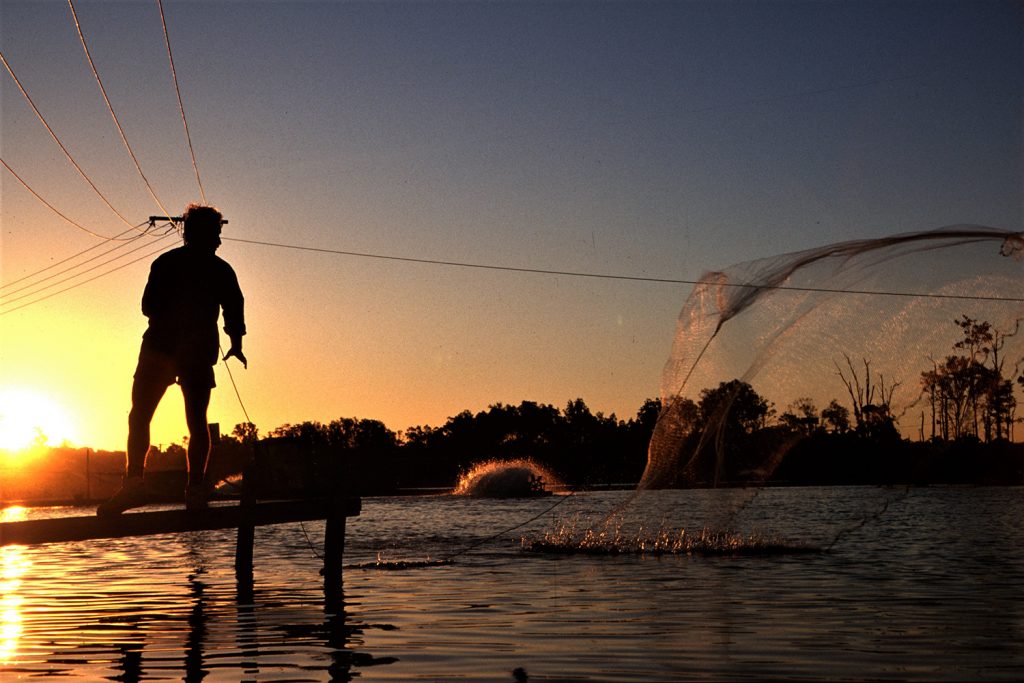
Responsibility
Nutrient recycling and circular economies can support sustainable intensification of aquaculture, part 1
With nutrient recycling, aquaculture can contribute sustainably toward the nutritional requirements of billions of people over the next century.
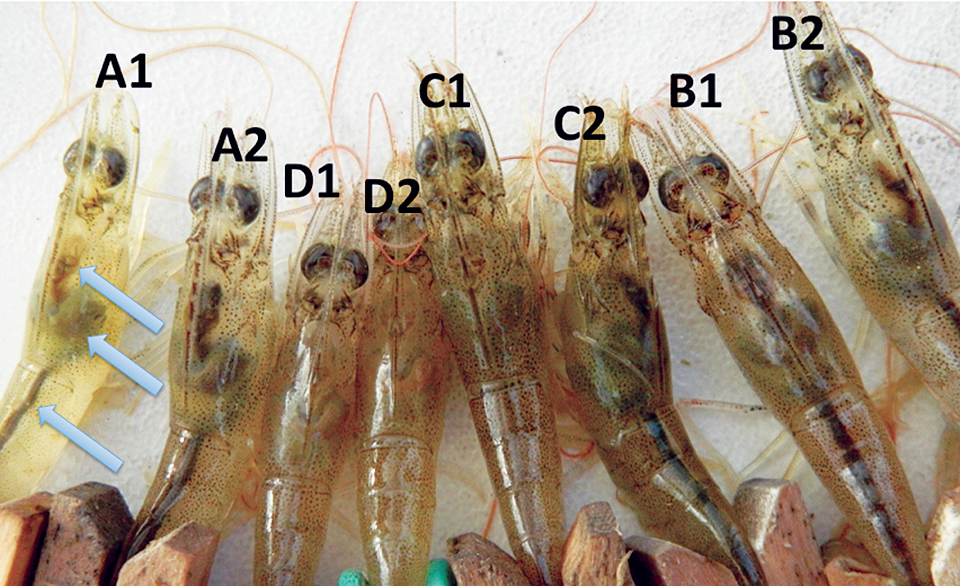
Health & Welfare
Tilapia could enhance water conditions, help control EMS
A laboratory study at the University of Arizona examined the effects of tilapia to control EMS and mortality in Pacific white shrimp.in controlling AHPN.
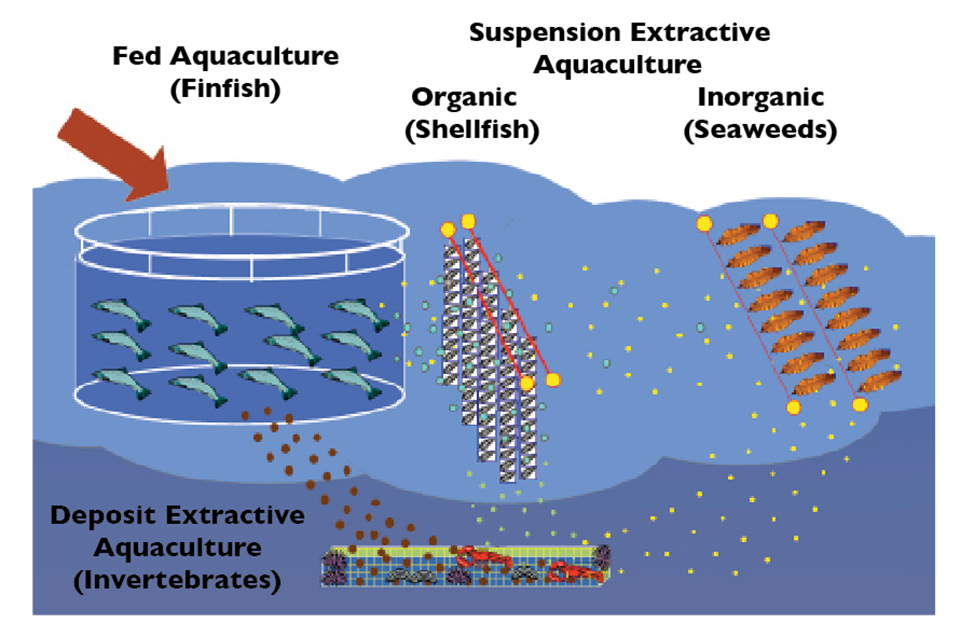
Responsibility
Integrated multi-trophic aquaculture, part 1
Integrated multi-trophic aquaculture involves cultivating fed species with extractive species that utilize inorganic and organic wastes for their growth.
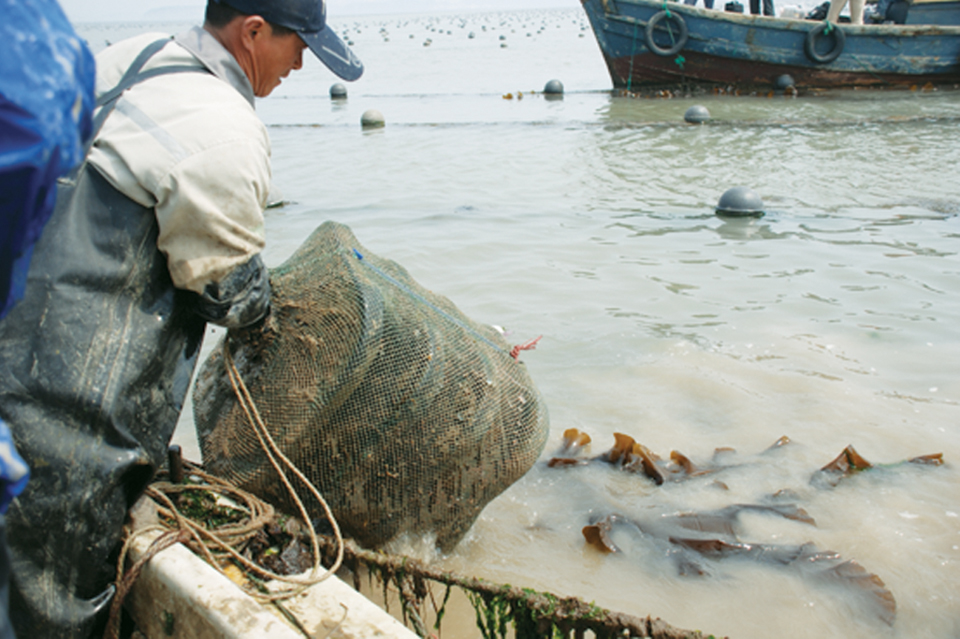
Responsibility
Sea cucumbers enhance IMTA system with abalone, kelp in China
In the authors’ recent study, sea cucumbers were added directly to abalone cages with no modifications of the culture equipment to form a simple, low-cost IMTA production system.



